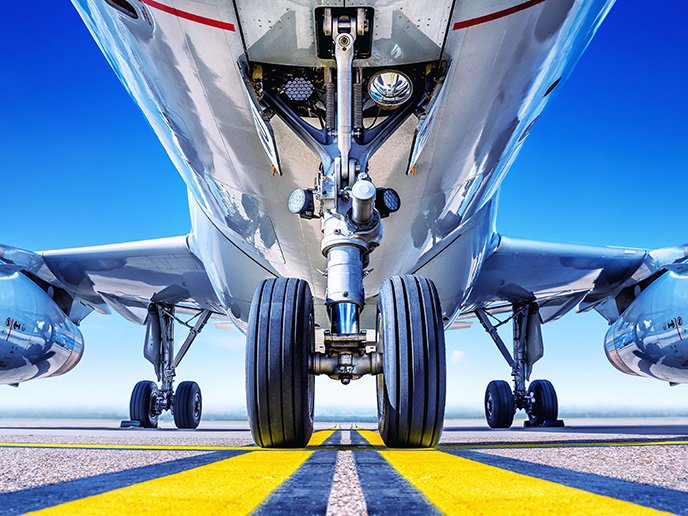Advances in next-generation aircraft component
As the aircraft manufacturing sector continues expanding to meet global demand, operators are increasingly concerned about achieving cost efficiencies as well as ensuring safety. This has seen a rapid increase in the use of advanced composite materials such as thermoplastic polymers, due to their lightweight properties, strength and durability. The use of novel advanced materials has however made the design and manufacture of certain aircraft structures and components more challenging. The EU-funded DOMMINIO project sought to address this with new methods for manufacturing high-quality multifunctional and intelligent airframe parts. Intelligent aircraft parts, built from novel composite materials, provide data about structural health that enables targeted maintenance and repair approaches.
Robotic technologies, advanced simulation tools
DOMMINIO set out to achieve its aims through combining robotic additive manufacturing technologies, advanced simulation tools, on-line quality monitoring and real-time data-driven fault detection. Developments in the field of advanced thermoplastic materials and new laser-heating technologies were also employed. “The project brought together 13 partners from eight countries, covering the processes, material solutions and technologies that were to be developed within the project,” says DOMMINIO project member Pablo Romero-Rodriguez from AIMEN in Spain. “We also had partners from universities, research institutes and enterprises, to ensure that our results could be deployed.” The EU Aviation Safety Agency (EASA) was involved as a third party in the project, to help ensure compliance with relevant regulations. “It is very challenging to apply additive manufacturing and new materials in aerospace applications,” notes Romero-Rodriguez. “We wanted this project to be a stepping stone towards consolidating these technologies, and bringing them to market.”
Innovations in intelligent airframe part manufacturing
This cooperative approach has led to new innovations in intelligent airframe part manufacturing. These include methods for developing continuous carbon-fibre reinforced high- performance composite filaments and tapes. Other innovative processing methods were developed to produce fibres with high electrical conductivity and piezo-resistive properties. These can be used by aircraft designers to introduce functional characteristics such as sensing and de-icing. The project team also developed an online controllable laser scanning-assisted heating system, to ensure the required surface temperature profile of the component. An advanced non-contact ultrasound method for quality monitoring was also developed, along with tools for predictive and preventive maintenance.
Tailored products with embedded functionalities
These production innovations were then combined with additive manufacturing and new materials, and trialled to produce prototype components. One key finding was that the additive manufacturing of high-performance composites can be enhanced by laser. DOMMINIO demonstrated how this can increase layer adhesion and mechanical properties. The project also demonstrated how next-generation composites can enhance design and performance. “We showed the importance of digitalising the composite material value chain to ensure efficiency,” adds Romero-Rodriguez. “This industry has a low level of digitalisation. DOMMINIO has gone some way to addressing this, through providing valuable data on the benefits of this.” In partnership with EASA, the project’s results will also help to define new standards applicable to new manufacturing configurations, methodologies and materials. These discussions are ongoing within the project’s network, and with international bodies. “We were able to demonstrate a new disruptive way of manufacturing highly tailored products with embedded functionalities,” says Romero-Rodriguez. “Our hope is that this will pave the way for the resource-efficient manufacturing of next-generation composite components, with new functionalities.”
Keywords
DOMMINIO, aircraft, airframe, aerospace, thermoplastic, polymers, robotic







